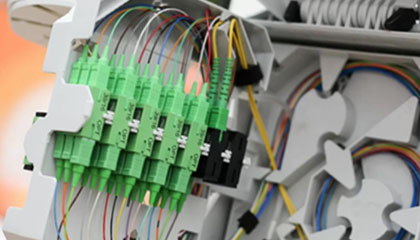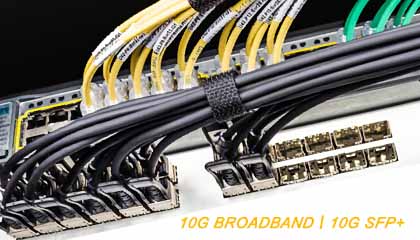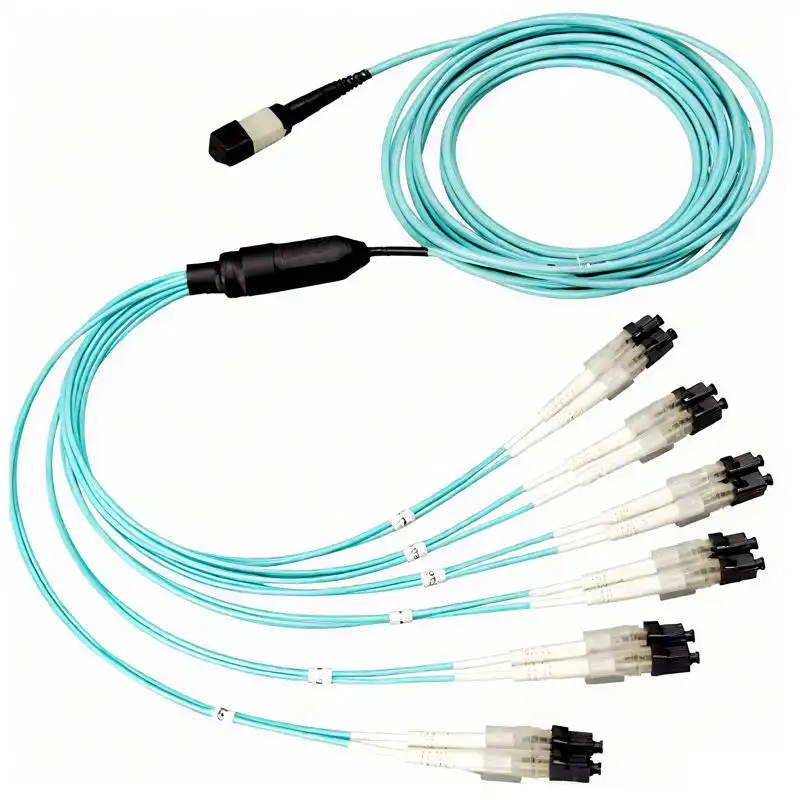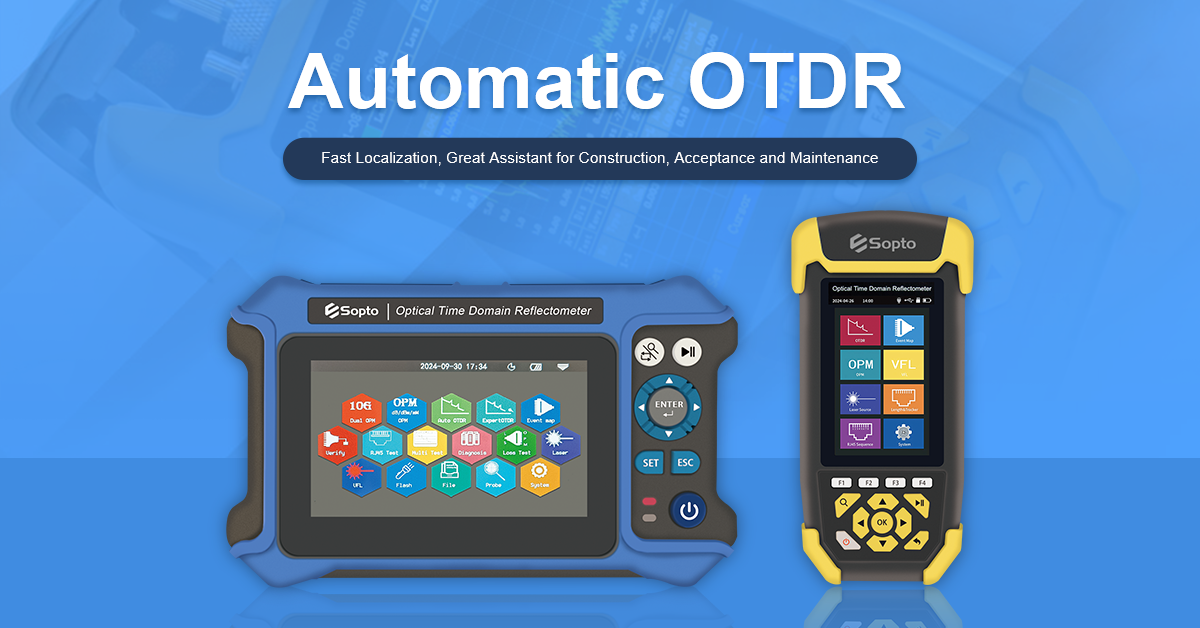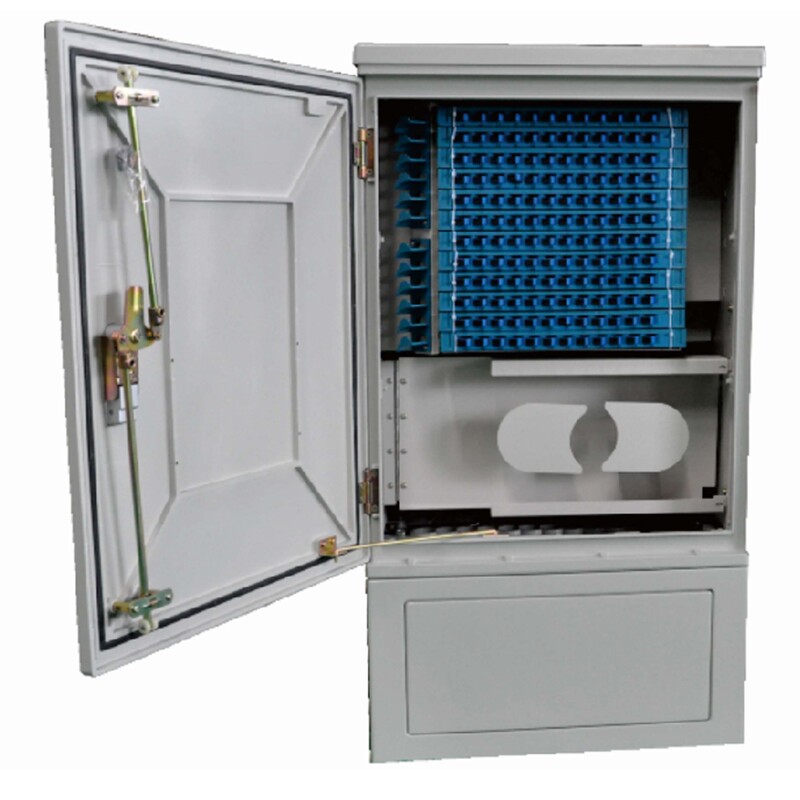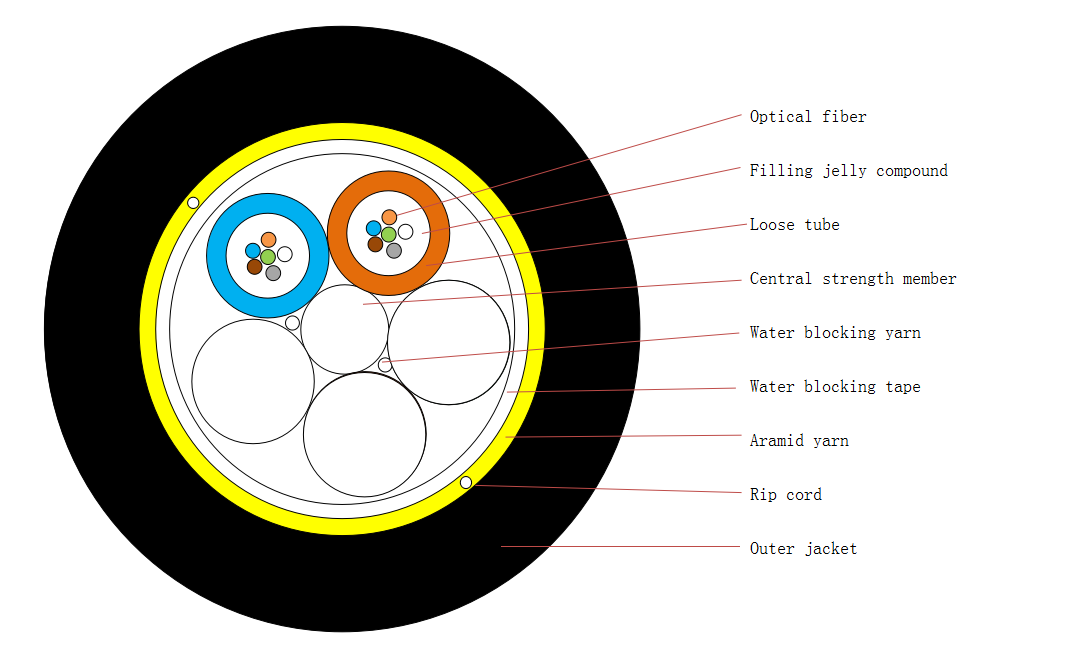In modern FTTH (Fiber to the Home) and optical communication networks, three types of fiber distribution products are widely used: Splitter Distribution Box, ODF (Optical Distribution Frame), and Fiber Terminal Box. Although they all belong to the optical distribution and management system, their functions, applications, and product selection logic are very different.
Splitter Distribution Box
Integrates fiber termination, splicing, distribution, and especially PLC optical splitter installation. Designed for distributing optical signals from feeder cables to multiple drop cables in FTTH networks.
Key Features
- Supports PLC splitters (tube type or ABS cassette type)
- Typical capacity: 4 cores, 8 cores, 16 cores, 32 cores, 64 cores, etc.
- Suitable for both indoor and outdoor installation, with dustproof and waterproof protection
- Provides fiber protection, flexible cable management, and easy access for maintenance
Applications
Located at distribution points in FTTH, such as corridors, small community telecommunication rooms, outdoor poles, or wall-mounted boxes. Often used between the ODF in the central office and the Fiber Terminal Box in end-user sites.
Typical Matching Products
ODF – Optical Distribution Frame
A large-capacity optical distribution platform used for managing, connecting, and scheduling backbone optical cables. It is the core fiber management equipment in a telecom room or data center.
Key Features
- Installed in central offices or data center racks
- Can handle hundreds to thousands of fiber cores
- Provides termination, splicing, patching, and protection
- Modular design, easy to expand and maintain
Applications
Deployed in the core layer of a fiber optic network. Mainly used for connecting feeder optical cables from OLT equipment to distribution cables leading to splitter boxes.
Typical Matching Products
Fiber Terminal Box
A compact device for fiber optic splicing, termination, and protection. It is the last connection point before the end-user equipment such as ONU/ONT.
Key Features
- Small capacity: 2 cores, 4 cores, 8 cores, 12 cores, etc.
- Simple design, easy to install on walls, poles, or inside offices
- No splitter inside – only used for fiber termination
Applications
Located at the end-user access point, such as homes, offices, or floor distribution points. Provides a protected environment for connecting fiber drop cables with indoor patch cords.
Typical Matching Products
Comparison of Fiber Distribution Products
| Product | Network Layer | Installation Location | Main Role | Matching Products |
|---|---|---|---|---|
| ODF | Core Layer | Telecom room, data center | Centralized management of backbone cables | Patch cords, splice trays |
| Splitter Distribution Box | Distribution Layer | Community, building corridor, outdoor pole | Fiber splitting and distribution | PLC splitter, adapters |
| Fiber Terminal Box | Access Layer | Home, office, user access point | Fiber termination and user connection | ONU/ONT, pigtails |
In Short:
- ODF → For backbone cable management in central offices.
- Splitter Box → For optical power distribution in FTTH access networks.
- Terminal Box → For final fiber termination at the user's premises.
How to Choose the Right Product?
By Network Layer
- Core layer → ODF
- Distribution layer → Splitter Distribution Box
- Access layer → Fiber Terminal Box
By Fiber Quantity
- Large capacity (>144 fibers) → ODF
- Splitting ratio required → Splitter Distribution Box
- Small capacity (2–12 fibers) → Fiber Terminal Box
By Installation Environment
- Indoor central office → ODF
- Outdoor/community distribution → Splitter Distribution Box
- Indoor home/office → Fiber Terminal Box
Typical FTTH Network Topology
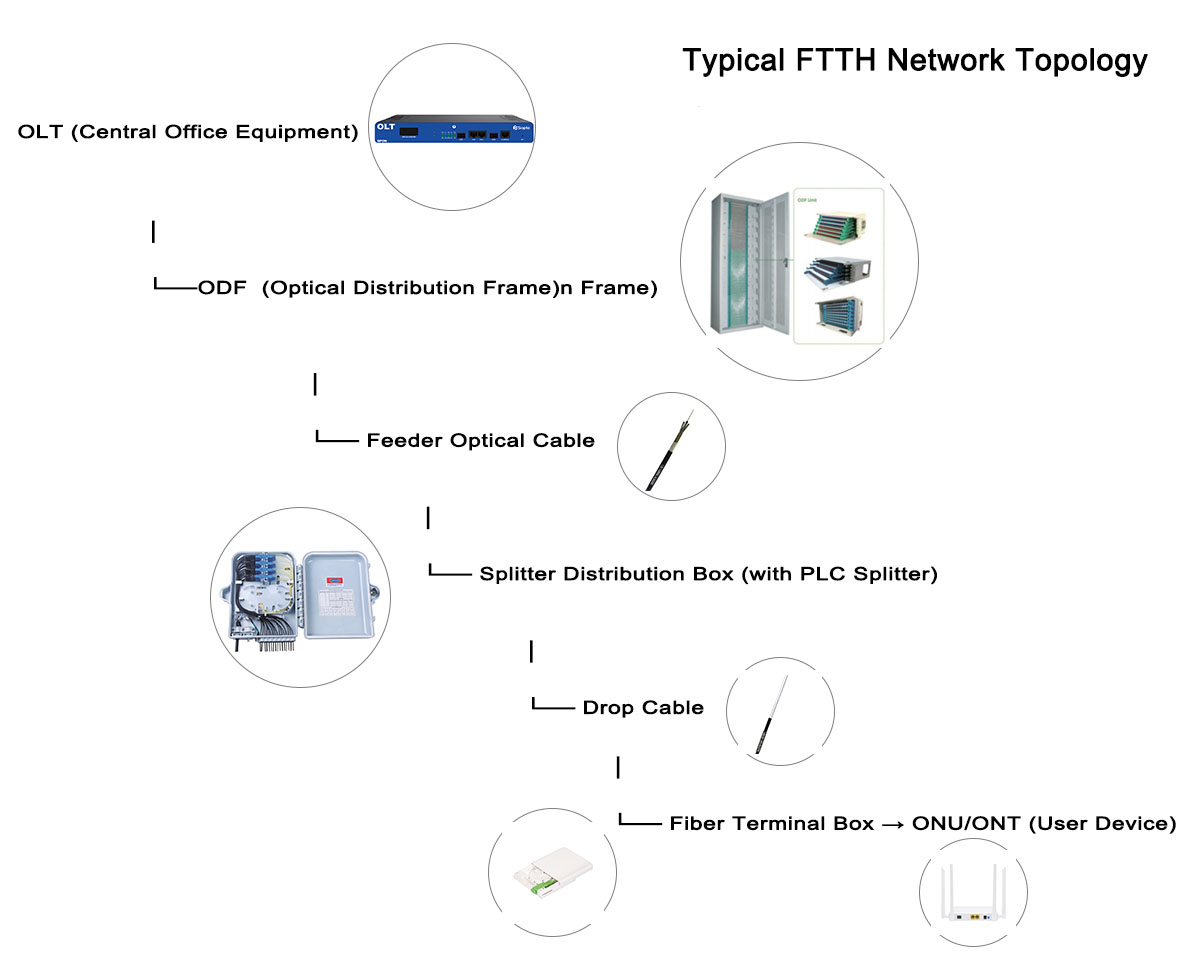
- ODF, Splitter Distribution Box, and Fiber Terminal Box are not interchangeable, but complementary components of an FTTH network.
- ODF ensures efficient backbone fiber management in central offices.
- Splitter Distribution Box provides optical power splitting and flexible distribution for multiple subscribers.
- Fiber Terminal Box enables safe, reliable, and user-friendly fiber termination at the end-user side.
By choosing the right product at the right layer, operators and integrators can build a highly reliable, scalable, and cost-effective optical fiber network.

